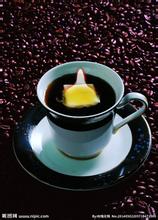Introduction to the producing area of Brazilian Bobang Coffee Bean species and Flavor description
Introduction to the producing area of Brazilian Bobang Coffee Bean species and Flavor description
Since the introduction of coffee trees from French Guiana (Guyana) in 1720, coffee production has gradually become a science. Before 1990, the Brazilian government carried out strict monitoring of the coffee industry, with both strict intervention and price protection measures, and the state has been implementing minimum price protection measures for farmers, resulting in coffee overproduction. Before World War II, the remaining stock reached 78 million bags, which had to be burned by fire or thrown into the water to destroy.
Since the opening of the free market in 1990, the original Brazilian Coffee Authority (IBC) has been replaced by the National Economic Association, the country's non-investment administrative body, which pursues a policy of non-intervention and allows producers to negotiate directly with exporters. The business activities of exporters are supervised by government legislation, and legitimate exporters are registered by the relevant departments.
The development of Yunnan coffee industry is not fast. Yunnan coffee is mainly exported as raw materials, with an export volume of about 15000 tons in 2006. More than 60% of raw materials are acquired by Nestl é and Maxwell each year, and Starbucks and Amway have joined in recent years.
Due to the lack of deep processing and marketing, Yunnan coffee is not well-known and unrecognized by people locked in the mountains. It is believed that with the in-depth development of Yunnan coffee industry, the rising demand of domestic coffee market and the efforts of the government and enterprises, Yunnan coffee will usher in a new period of development.
Bourbon: this variety is derived from the iron pickup and was expanded by the French in 1708 on the island of Bourbon (now known as Reunion). Bobang also has a beautiful aroma and rich flavor, which is higher in yield and growth than iron pickup trucks. It is suitable for planting in an area of 1200 million meters, but it is less resistant to diseases and insect pests and is more sensitive to strong winds and heavy precipitation. Bourbon coffee is a variety of small-grain coffee second only to iron pickup. At first, the main branch and trunk grew upward at 45 degrees, and with the fruit load, the lateral branches were denser, the fruit was more, and the yield was higher. But the berries are smaller and ripen more slowly. Bobang terminal bud tender leaves are green, called green top coffee
Including all coffee beans grown in Brazil, except for Santos, Brazilian beans are mostly "cheap and good" coffee. Can be used for mass production of comprehensive coffee beans, most of which are re-roasted. The main raw material of instant coffee is also Brazilian coffee beans. When the coffee bean germ is very fresh, it is artificially refined and naturally dried in the vulva for about 60-70 days, so that the sweetness of the pulp fully infiltrates into the bean. Features: coffee beans have a strong aroma, moderate bitterness, high texture acidity, soft overall taste, low acidity and endless aftertaste. The taste of Brazilian coffee has a low sour taste, with the sweet and bitter taste of coffee, the entrance is very smooth, but also with a hint of grass aroma, slightly bitter in the fragrance, smooth and smooth, with a pleasant aftertaste. There are no outstanding advantages for Brazilian coffee, but there are no obvious drawbacks. It has a mild and smooth taste, low acidity and moderate mellowness.

Important Notice :
前街咖啡 FrontStreet Coffee has moved to new addredd:
FrontStreet Coffee Address: 315,Donghua East Road,GuangZhou
Tel:020 38364473
- Prev

Taste and Variety characteristics of Colombian Emerald Coffee introduction to the regional treatment of manor production
Colombian Emerald Coffee Variety characteristics Taste Manor Regional treatment method Colombia, located in northwest South America, is a beautiful country with a long history. Indians have lived on this land since ancient times. It was colonized by Spain in 1531 and gained independence in 1819. It was renamed in 1886 to commemorate the discovery of the American continent.
- Next

Panamanian Flower Butterfly Taste and Flavor description of Coffee Bean Variety region Manor
Panamanian Flower Butterfly Taste Flavor describes the variety of coffee beans produced by bourbon Bourbon Bourbon Coffee plants produce 20-30% more coffee than typical, but have a smaller harvest than most coffee varieties. Bourbon coffee has a less conical shape than a typical plant, but has more secondary branches. The angle between the branch and the main stem is small, and the branch points of the main stem are dense. Leaf
Related
- Detailed explanation of Jadeite planting Land in Panamanian Jadeite Manor introduction to the grading system of Jadeite competitive bidding, Red bid, Green bid and Rose Summer
- Story of Coffee planting in Brenka region of Costa Rica Stonehenge Manor anaerobic heavy honey treatment of flavor mouth
- What's on the barrel of Blue Mountain Coffee beans?
- Can American coffee also pull flowers? How to use hot American style to pull out a good-looking pattern?
- Can you make a cold extract with coffee beans? What is the right proportion for cold-extracted coffee formula?
- Indonesian PWN Gold Mandrine Coffee Origin Features Flavor How to Chong? Mandolin coffee is American.
- A brief introduction to the flavor characteristics of Brazilian yellow bourbon coffee beans
- What is the effect of different water quality on the flavor of cold-extracted coffee? What kind of water is best for brewing coffee?
- Why do you think of Rose Summer whenever you mention Panamanian coffee?
- Introduction to the characteristics of authentic blue mountain coffee bean producing areas? What is the CIB Coffee Authority in Jamaica?

